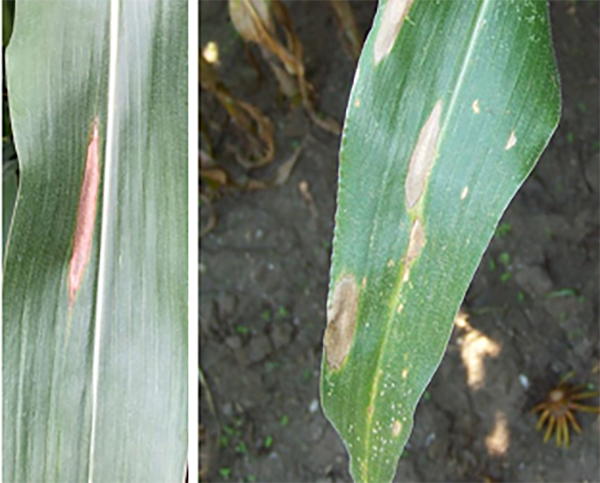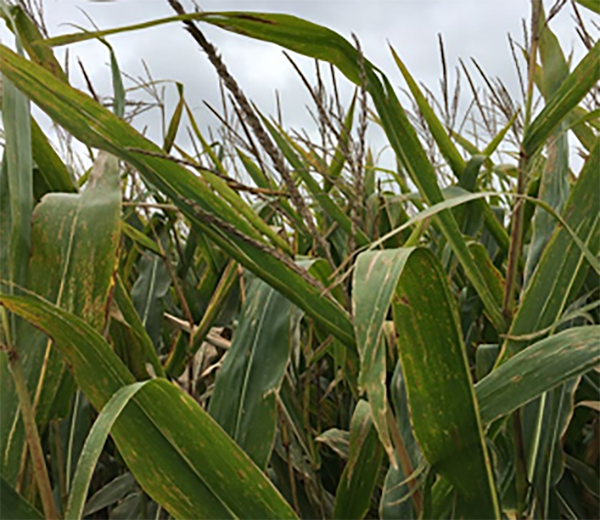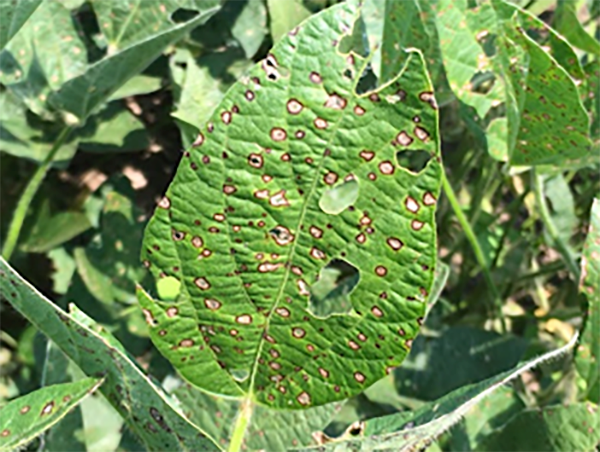Wet Spring Makes Disease Scouting More Critical

This summer is not one to slack on disease scouting, especially if you planted into wetter-than-expected soil conditions in the spring.
“Early planting into cool, wet soils can increase disease risk in corn and soybeans, both early and later on in the growing season,” says Aaron Goodnight, retail sales agronomist, Brevant® seeds. “The planting date will determine where the plant is in its life cycle during key disease time frames, and the impact of these diseases can vary drastically depending on crop maturity.”
Regular crop scouting is the best way to stay ahead of crop disease.
“I encourage growers to check fields during key periods in the growing season, including postemergence, pretassel and at pollination,” Goodnight says. “However, more frequent disease scouting is recommended if you have a known issue or a field with previous disease history.”
Here are the top diseases that he expects to surface in Midwestern corn and soybean fields this summer.

Gray leaf spot: Heavy wind and rain aid spread of disease from soil to and among developing plants. Infection requires leaf surfaces to be wet and relative humidity in the leaf canopy to be at least 90% for 12 consecutive hours.

Northern corn leaf blight: Late-planted corn is exposed to disease at vulnerable early growth stages and can suffer higher levels of infection. Significant yield loss can occur if leaf area is destroyed before grain fill is complete. Early infection allows secondary outbreaks, disease spread and leaf damage to create even greater yield losses.

Tar spot: This yield-robbing disease is favored by cool temperatures (60-70 F, 16-20 C), high relative humidity (>75%), frequent cloudy days and seven-plus hours of dew at night. Tar spot is polycyclic and can continue to produce spores and spread to new plants as long as environmental conditions are favorable.

Frogeye leaf spot: This disease can occur at any time, so watch for signs early and often, especially seven to 14 days after periods of rain or fog followed by warm weather. Signs may appear on upper or lower leaf surfaces, stems and pods. Diseased plants are usually widespread within a field.
White mold: Soybean plants are most vulnerable to white mold infection during bloom phase. With adequate moisture, airborne spores that land on surrounding plants use senescing petals as the gateway to infect the plant.
For more information on the diseases listed above, download a copy of our Corn & Soybean Disease ID Guide.
Because disease development is highly influenced by weather and further progression in corn and soybeans can be rapid, it’s important for you to be proactive with disease management plans.
Disease history, hybrid or variety tolerance ratings and weather conditions (both current and predicted) are all factors to consider. It’s also important to understand which diseases go from infection to sporulation quickly and then to time fungicide applications based on these insights.
“Fungicide application timing is critical, because your window of protection is limited and varies by product,” Goodnight says. “It is important to stay ahead of the disease and to protect the plant at the crucial stages of development.”
Most fungicides are very effective for a two- to three-week period. Timeliness can maximize the value of the application and reduce the need for return applications.
The fungicides from Corteva Agriscience are proven to work against the toughest-to-control diseases, including the yield-robbing diseases mentioned above, and deliver strong plant health. “With its two modes of action, Aproach® Prima is a great fungicide at a value price,” notes Goodnight. “Viatude® delivers best-in-class white mold protection for soybeans. It has the same proven disease control and performance of Onmira™ active found in Aproach® fungicide that farmers have come to rely on, plus prothioconazole for added white mold protection, strong plant health and higher yield potential at harvest.”
Get additional insights on fungicide application timing in this Brownfield Managing for Profit episode.
Aproach® Prima and Viatude™ are not registered for sale or use in all states. Contact your state pesticide regulatory agency to determine if a product is registered for sale or use in your state. Always read and follow label directions.
Find expert insights on agronomics, crop protection, farm operations and more.